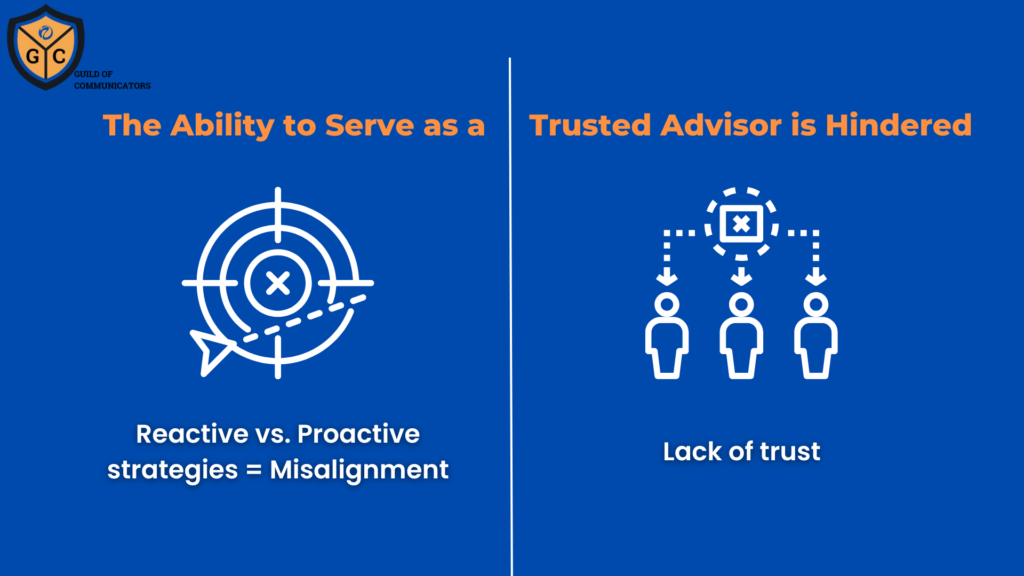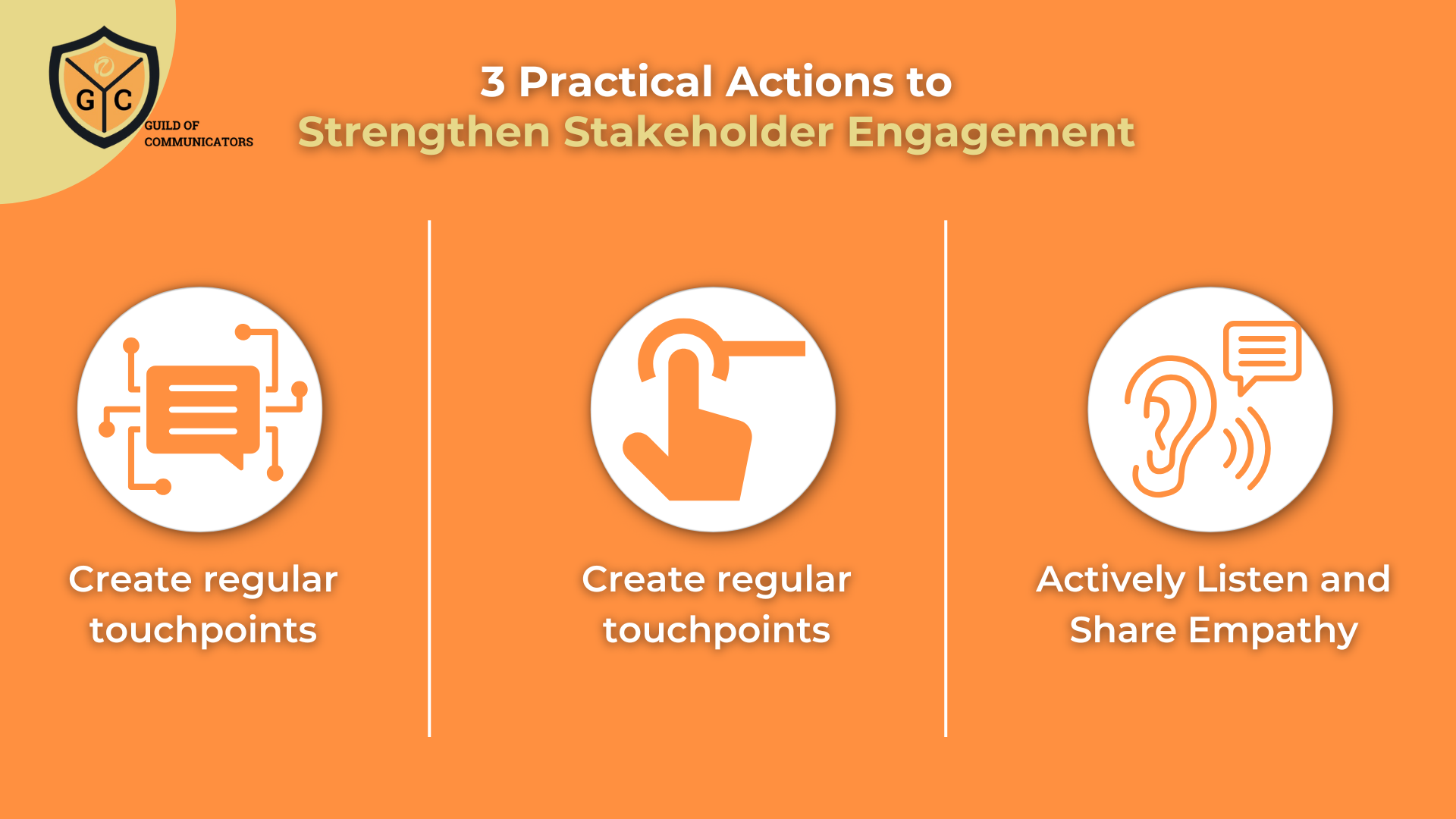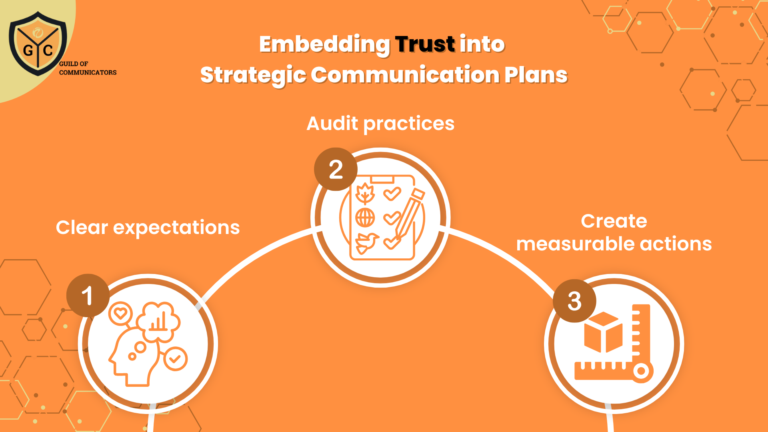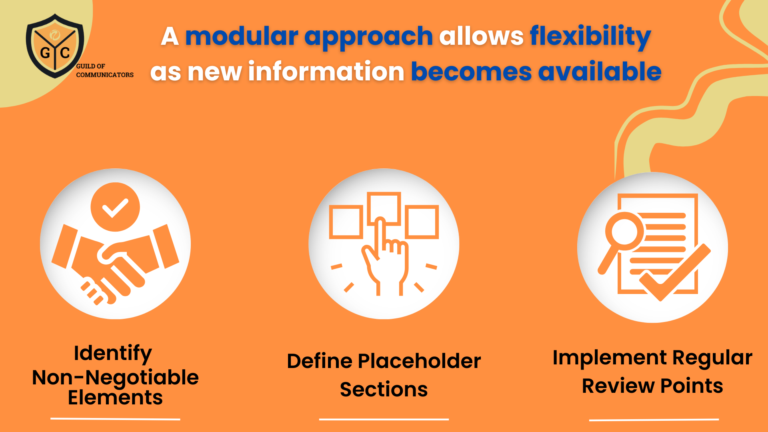A strong relationship with a stakeholder can be vital to success.
For communicators, the quality of relationships with stakeholders can make or break their ability to deliver meaningful outcomes. Stakeholders hold the key to resources, alignment, and trust—all of which are essential for achieving communication goals.
Yet, stakeholder relationships are not always easy to navigate. Misaligned priorities, differing expectations, and communication gaps can create challenges. Understanding the fundamentals of relationship-building provides communicators with the tools they need to foster positive, productive partnerships.
The Impact of Poor Stakeholder Relationships for Communicators
The repercussions for communicators can be significant when encountering/having poor stakeholder relationships. Their ability to operate as strategic advisors can be hindered due to misalignment and lack of trust.
Poor relationships erode trust, making it difficult for communicators to gain buy-in for their initiatives. Stakeholders may question the communicator’s motives, leading to resistance and a breakdown in collaboration.
Ineffective relationships often result in reactive rather than proactive communication strategies. Instead of focusing on long-term objectives, communicators may find themselves firefighting short-term issues, which compromises their ability to deliver strategic value.
Strained relationships can damage a communicator’s credibility. When stakeholders lose confidence in their strategic counsel, the communicator’s role is diminished, affecting overall organisational outcomes.

What Success Looks Like in Stakeholder Engagement
Positive stakeholder relationships are characterised by trust, collaboration, and mutual respect. These elements create a foundation for effective communication and strategic alignment.
In a successful relationship, stakeholders view the communicator as a trusted advisor. This trust allows for open dialogue, where concerns are addressed, and opportunities are explored collaboratively.
Strong relationships also enable better resource allocation. Stakeholders are more likely to provide the support needed—whether in terms of time, budget, or influence—to execute communication initiatives effectively.
Finally, when relationships are strong, tactical execution becomes smoother. Clear expectations, consistent communication, and shared objectives minimise misunderstandings and enhance outcomes.
The Core Principle for Building Lasting Stakeholder Relationships
Trust is the cornerstone of any successful stakeholder relationship. Without trust, even the most well-intentioned efforts can fall short.
Transparency is key to building trust. Stakeholders need to feel that communicators are honest and forthcoming about their intentions, plans, and limitations. Consistency in actions and messaging reinforces this transparency, showing stakeholders that they can rely on the communicator.
Accountability further strengthens trust. When communicators take responsibility for their actions and deliver on promises, stakeholders see them as dependable partners.
A simple example of a basic-level daily action: A communicator who consistently meets deadlines and provides clear updates is more likely to be seen as trustworthy and reliable. Conversely, one that works in a silo, and assumes support might find him/herself constantly having to justify their work to their stakeholders.
Viewing Stakeholder Relationships as a Growth Opportunity
Adopting a growth mindset can transform how communicators approach stakeholder relationships. This mindset emphasises learning and improvement, even in the face of challenges.
Challenges with stakeholders should be seen as opportunities to strengthen the relationship. For instance, disagreements can lead to valuable discussions that clarify expectations and priorities.
Communicators can adopt a growth mindset by seeking feedback and being open to change. Viewing stakeholder interactions as a chance to learn and adapt helps build resilience and fosters mutual respect. Actionable steps include reflecting on past interactions to identify areas for improvement, actively seeking stakeholder input, and continuously refining engagement strategies based on lessons learned.

Three Practical Actions to Strengthen Stakeholder Engagement
Strong stakeholder relationships are not built overnight, but by focusing on trust, collaboration, and continuous improvement, communicators can create partnerships that drive meaningful results.
Here are three actions to add to your repertoire:
1. Establish Clear Communication Protocols
Documenting communication processes helps set expectations and reduces misunderstandings. For example, creating a framework for decision-making or defining escalation paths ensures that all parties are aligned on how to collaborate effectively.
2. Create Regular Touchpoints
Consistent updates—such as monthly meetings or progress reports—keep stakeholders informed and engaged. These touchpoints provide opportunities to address concerns, share successes, and align on next steps.
3. Invest in Active Listening and Empathy
Understanding stakeholder priorities and concerns requires active listening. By demonstrating empathy, communicators can build rapport and show stakeholders that their perspectives are valued. This approach fosters trust and encourages open dialogue.
These basic principles and actions can support communicators by being well-equipped to navigate the landscape of stakeholder engagement and deliver lasting value to their organisation and teams.
Join the Guild of Communicators at www.gocommunicators.com.
The Guild of Communicators (Go Communicators) stands as the preferred community for communicators seeking to elevate their craft. Through our Academy of Excellence, we provide best-in-class frameworks, fit-for-purpose resources, and opportunities that support members in achieving professional excellence.
We provide the following resources, tools and opportunities to members:
- Best-in-Class Resources: We provide our members with access to frameworks, playbooks and tools that empower them to achieve and maintain professional excellence.
- Continuous Learning and Growth: Through our comprehensive training programmes, workshops, delivered digitally, 24/7 and in-person, we support the ongoing professional development of communicators.
- A Supportive Network: Go Communicators fosters a vibrant community where communicators can connect, collaborate, and support each other, creating a network that champions mutual growth and success.
- Shared Knowledge and Expertise: Our members benefit from the collective wisdom and experience of a diverse group of communication professionals, enhancing their skills and perspectives.
Go Communicators is dedicated to amplifying the impact and value that communicators bring to their organisations, highlighting their crucial role in driving success and growth.
We equip our members with the strategies and tools needed to become influential leaders and business partners within their organisations, enhancing their ability to drive positive change and outcomes.
Through our support and resources, communicators can demonstrate clear, measurable outcomes that showcase their value and impact, reinforcing their importance to their organisations.
Join the Guild of Communicators at www.gocommunicators.com
Subscribe to join over 1500+ communicators and brands getting value every Tuesday while reading A Communicator’s Perspective, our weekly newsletter.




